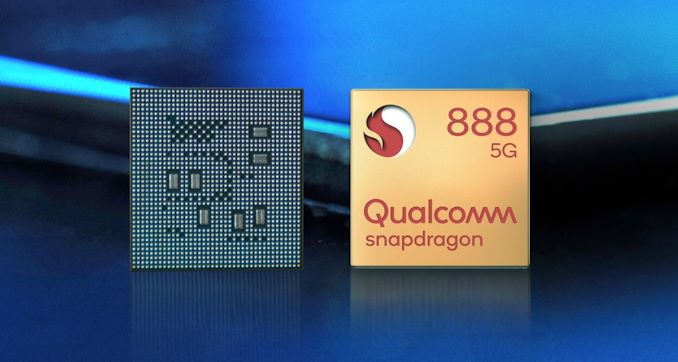The Qualcomm WCN3999 is a dual-mode Bluetooth and Wi-Fi SoC designed for high-performance Wireless Communication in Mobile Devices such as smartphones, tablets, and laptops. It integrates Wi-Fi 5 (802.11ac), Bluetooth 5.0, and features dual-band (2.4 GHz and 5 GHz) connectivity, as well as support for Wi-Fi Direct and Bluetooth Low Energy (BLE). The WCN3999 is optimized for low-power, high-performance wireless communication and seamless device connectivity.
If you're looking for equivalent ICs to the Qualcomm WCN3999, you will want to find solutions that offer dual-mode Wi-Fi and Bluetooth functionality, with Wi-Fi 5 (802.11ac) or Wi-Fi 6 (802.11ax), Bluetooth 5.0 or higher, and good integration for mobile and IoT devices.
Equivalent ICs to the Qualcomm WCN3999:
1. Broadcom
Broadcom is a leader in the Wi-Fi and Bluetooth SoC market, offering solutions that compete directly with the Qualcomm WCN3999 for mobile devices and consumer electronics.
Broadcom BCM43455: A dual-mode Wi-Fi (802.11ac) and Bluetooth 5.0 SoC, this chip is commonly used in smartphones and tablets. It provides dual-band Wi-Fi (2.4 GHz and 5 GHz) and supports Wi-Fi Direct, Bluetooth Low Energy (BLE), and audio streaming. This IC offers performance and functionality similar to the WCN3999.
Broadcom BCM4375: A Wi-Fi 5 (802.11ac) + Bluetooth 5.0 combo chip with support for dual-band Wi-Fi, Wi-Fi Direct, and Bluetooth Low Energy (BLE). It is used in smartphones, tablets, and smart TVs, providing high-speed wireless connectivity with low power consumption, just like the WCN3999.
Broadcom BCM43684: This Wi-Fi 6 (802.11ax) + Bluetooth 5.0 SoC offers dual-band Wi-Fi with support for OFDMA, MU-MIMO, and target wake time (TWT) for better power management. This chip is suitable for next-gen devices and offers a future-proof solution compared to the WCN3999.
2. MediaTek
MediaTek provides a range of Wi-Fi and Bluetooth combo chips suitable for smartphones, tablets, laptops, and other mobile devices.
MediaTek MT7668: A dual-mode Wi-Fi 5 (802.11ac) and Bluetooth 5.0 solution. It integrates 2.4 GHz/5 GHz dual-band Wi-Fi and Bluetooth Low Energy (BLE), making it suitable for mobile devices, smart speakers, and IoT applications. It competes with the WCN3999 in terms of performance, power efficiency, and integration.
MediaTek MT7921: A Wi-Fi 6 (802.11ax) + Bluetooth 5.2 combo chip, this is a more modern alternative offering faster speeds and better network efficiency, especially in crowded environments. The MT7921 is optimized for smartphones, laptops, and consumer electronics, and offers dual-band support and advanced features like OFDMA, MU-MIMO, and Target Wake Time (TWT), which makes it a good option for next-gen wireless solutions.
MediaTek MT6631: A Wi-Fi 5 (802.11ac) and Bluetooth 5.0 chip designed for smartphones and IoT applications. It integrates dual-band Wi-Fi, Bluetooth LE, and Wi-Fi Direct for seamless connectivity. Similar to the WCN3999, this chip supports high-performance mobile communication and audio streaming applications.
3. Realtek
Realtek is known for its Wi-Fi and Bluetooth solutions for both consumer and IoT devices, often focusing on cost-effective alternatives.
Realtek RTL8723BU: A Wi-Fi 4 (802.11n) + Bluetooth 4.2 combo chip, it is a lower-end alternative to the WCN3999. This solution is suitable for entry-level mobile devices, laptops, and IoT devices that do not require Wi-Fi 5 but still need Bluetooth connectivity.
Realtek RTL8822BE: A Wi-Fi 5 (802.11ac) + Bluetooth 5.0 chip that supports dual-band Wi-Fi (2.4 GHz/5 GHz) and is typically used in laptops, tablets, and PCs. It provides a similar feature set to the WCN3999, with Wi-Fi Direct and Bluetooth Low Energy (BLE) support.
Realtek RTL8761B: A Bluetooth 5.0 chip designed for wireless audio devices, such as headphones, earbuds, and speakers, offering high-quality audio streaming along with Bluetooth 5.0 and BLE. Although this is more focused on audio applications, it could be a potential alternative depending on the use case.
4. NXP (Freescale)
NXP provides Bluetooth and Wi-Fi combo chips that are used in automotive, industrial, and consumer electronics applications, offering strong connectivity features.
NXP QorIQ LS1028A: While primarily an embedded processor, NXP's QorIQ family supports Wi-Fi 5 and Bluetooth integration in industrial IoT and mobile devices. The LS1028A is an option for those needing high-performance and energy-efficient solutions.
NXP IW416: A Wi-Fi 5 and Bluetooth 5.0 combo chip that provides dual-band Wi-Fi (2.4 GHz/5 GHz), Bluetooth LE, and Wi-Fi Direct. It is optimized for mobile applications, including smartphones, tablets, and consumer electronics.
5. Qualcomm (Other Models)
If you're already considering Qualcomm as the base, there are other models within the same family that could serve as alternatives to the WCN3999, especially if your application requires future-proofing or additional features like Wi-Fi 6.
Qualcomm WCN3940: This is an earlier version of dual-mode Wi-Fi (Wi-Fi 4/5) and Bluetooth integration, typically used in mid-range mobile devices. It supports Wi-Fi Direct, Bluetooth Low Energy, and is a potential alternative for cost-sensitive applications.
Qualcomm WCN3980: Another dual-mode Bluetooth and Wi-Fi SoC with Wi-Fi 5 (802.11ac) and Bluetooth 5.0 support. It also provides Wi-Fi Direct and Bluetooth LE, and is widely used in mobile devices like smartphones and tablets.
6. Cypress Semiconductor (now part of Infineon Technologies)
Cypress offers Bluetooth and Wi-Fi solutions optimized for IoT devices, wearables, and mobile applications.
Cypress CYW4343W: A Wi-Fi 5 (802.11ac) + Bluetooth 4.2 combo chip. It integrates dual-band Wi-Fi (2.4 GHz and 5 GHz), Wi-Fi Direct, and Bluetooth LE capabilities. This chip is often used in wearables and mobile applications.
Key Features to Compare:
When looking for equivalent ICs to the Qualcomm WCN3999, the following features should be compared:
Wi-Fi Standard: Check if the chip supports Wi-Fi 5 (802.11ac) or newer Wi-Fi 6 (802.11ax) for optimal performance.
Bluetooth Version: Ensure it supports Bluetooth 5.0 or higher for better range and throughput.
Dual-Band: Look for dual-band Wi-Fi (2.4 GHz and 5 GHz) support.
Wi-Fi Direct: For direct peer-to-peer communication without a router.
Bluetooth Low Energy (BLE): For low-power wireless communication.
Power Efficiency: Look for chips optimized for battery-powered devices, particularly if the application involves mobile devices.
Integration and Features: Depending on the application, look for advanced features like Wi-Fi Direct, TWT (Target Wake Time) for power saving, and OFDMA/MU-MIMO for better network performance in dense environments.
Conclusion:
The Qualcomm WCN3999 is a dual-mode Bluetooth and Wi-Fi SoC that supports Wi-Fi 5 (802.11ac), Bluetooth 5.0, and Wi-Fi Direct for high-performance mobile and IoT devices. Equivalent ICs from other manufacturers include:
Broadcom BCM43455, BCM4375, BCM43684 (for similar dual-mode Wi-Fi and Bluetooth functionality).
MediaTek MT7668, MT7921, MT6631 (for Wi-Fi 5 and Wi-Fi 6 options).
Realtek RTL8723BU, RTL8822BE, RTL8761B (cost-effective alternatives).
NXP IW416, QorIQ LS1028A (industrial and automotive IoT solutions).
Each of these alternatives offers dual-band Wi-Fi, Bluetooth 5.0/5.2, and Bluetooth Low Energy support, providing suitable replacements based on specific needs and application requirements.
Other

What is HBM (High Bandwidth Memory)?
2024.09.05

What is Antenna Tuner IC?
2024.09.20

What’s the Difference between LPDDR and DDR?
2024.09.25

Snapdragon 888 5G Mobile Platform
2024.09.26

What is WiFi 6E?
2024.09.26

What is Bluetooth Audio SoC?
2024.09.26

What's HBM3E (High Bandwidth Memory 3)?
2024.09.26

What is an Audio Codec?
2024.10.09





